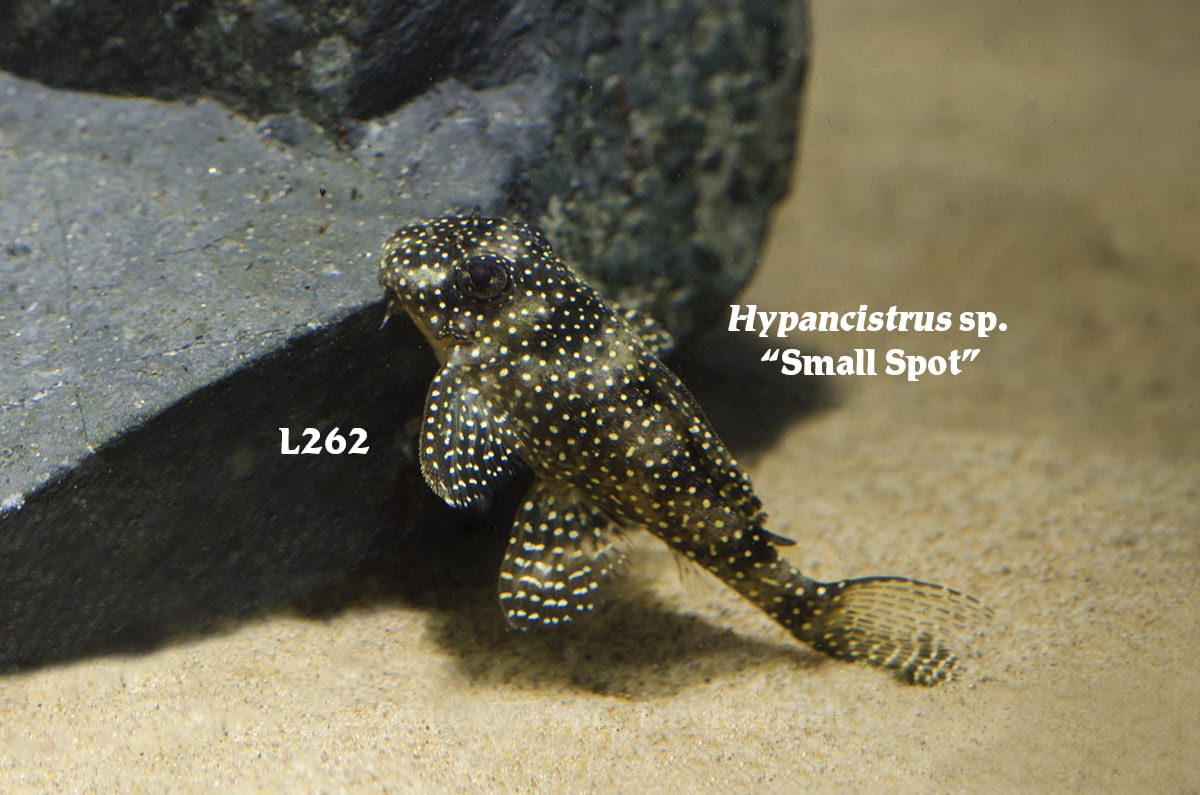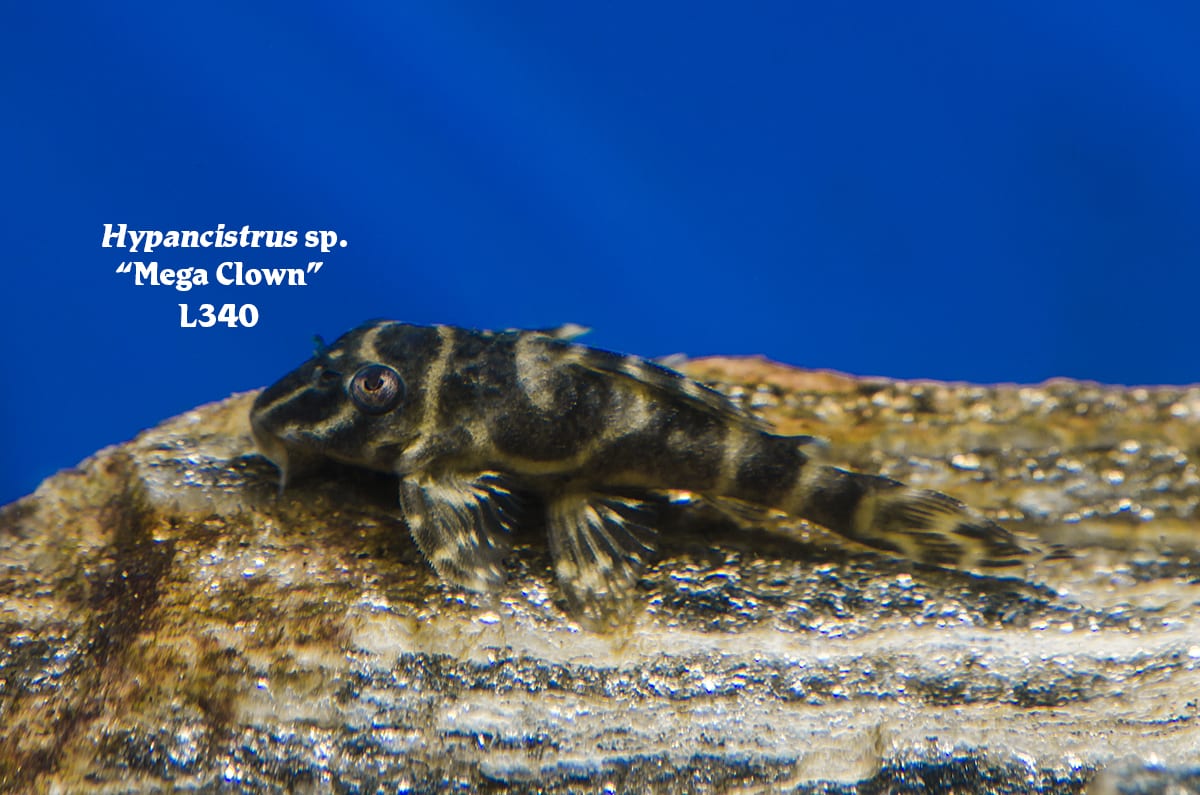From Our Tanks to Yours
From Our Tanks to Yours
It’s no wonder catfish are a popular group of fish to keep in the aquarist hobby. With dozens of species readily available in the trade, there are also a range of behaviors and niches these fish can fit into within your aquascape. Though diverse, the catfish world generally turns out hardy, active, beautiful, and personable tank inhabitants. Here at The Wet Spot, we are known for our rare and unique wild specimens, but the real gems in our eyes are the ones we have bred and tank raised in our own growing facility. Not only are we breeding rare and exotic species that would otherwise be hard to come by, but we are also doing our part to combat overfishing and stressful transport for fish from freshwater habitats all over the world. Originating from the Rio Tapajos and Rio Tomo of South America are many unique pleco catfish we are proud to raise in our tanks for yours. A few of our favorites include Peckoltia compta “L134″, Hypancistrus sp. “L262”, and Hypancistrus sp. “L340”.
Scientific NamePeckoltia compta “L134”
Common NameLeopard Frog Pleco
Temperature / pH75 to 82°F / 5.0 to 7.4 pH
Native LocationRio Tapajos
Preferred DietSmall invertebrates
Also known as “Leopard Frog Plecos” or more simply as “L134”, P. compta are gorgeous catfish with yellow bodies and dark leopard marbled striping and spots. Thriving in Rio Tapajos biotope tank setups, these plecos require a combination of rock piles, roots, driftwood, and slight current. Plants are not essential, though appreciated. Leopard Frog Plecos are cave spawners; if you plan on breeding, make sure they have plentiful crevices and caves in rock piles for egg laying. Males guard the eggs and fry until they can fend for themselves. Generally a very peaceful community fish that reaches about 4.5 inches at maturity, they can be paired with a variety of small and medium sized fish that do well in soft, acidic waters with current. They do, however, become slightly territorial. Any aggression born of this tendency can be tempered by sectioning regions of the tank off with decor and furnishing of about 12 square inches per individual. Omnivorous by nature, tending to thrive better with a heavy meat component. Varied diets should be offered with high quality flake, pellets, wafers, and frequent offerings of live and frozen meaty foods. They will only chomp on aquarium plants if they are particularly hungry, and are not particularly prone to eating algae. Waters should be soft with temperatures between 75 and 82°F with a pH of 5.0 to 7.4.
Scientific NameHypancistrus sp. “L262”
Common NameSmall Spot Pleco
Temperature / pH73 to 80°F / 5.0 to 7.0 pH
Native LocationRio Tapajos
Preferred DietSmall invertebrates
Pocked with densely clustered small white spots on dark bodies like the night sky, Hypancistrus sp. “L262”, is one of a kind. Known aptly as “Small Spot Plecos”, these specimens are a bit shy, and require plentiful hiding places within their Rio Tapajos tank set up made from rocks, driftwood, branches, clay pots, PVC pipe, and/or any variety of tank furnishings. Timidity aside, catching a glimpse of these gorgeous fellows can brighten the most rotten of days. Like their predecessors, they are cave spawners in which males become territorial and guard their young, and should be treated in a similar manner. Reaching 4 inches in length at maturity, these plecos can be kept alongside many tetras and other similar, small fish. They should not be kept with large or territorial bottom-dwelling species, or others that might compete for their primary food source. Exhibiting small and lightly-toothed mouths, these plecos are mostly carnivorous, though they do enjoy some vegetal components of their diets. They will, however, not eat aquarium plants or scrape algae. In captivity, they are best fed with dry discus food, bloodworm, brine, with some flake, and occasional spirulina wafers. Thriving in soft and well-oxygenated waters, tanks should be maintained with temperatures between 73 and 80°F and pH between 5.0 and 7.0.
Scientific NameHypancistrus sp. “L340”
Common NameMega Clown Pleco
Temperature / pH78 to 87°F / 6.0 to 8.0 pH
Native LocationRio Tomo
Preferred DietSmall invertebrates
The jokester of Rio Tomo in Colombia, is Hypancistrus sp. “L340”. Also known as “Mega Clown Plecos”, they are adorned in orange with bold black patterns. These plecos are quite active, though they still appreciate heavy furnishing with plentiful dark hiding places. Tanks should be equipped with sandy substrate, rock piles, driftwood, branches, and dead leaves. Oxygenation is key for the health of these plecos, and a good filtration system is ideal in addition to frequent water changes. Another small catfish, they reach 4 inches at maturity, and can be kept alongside many small, schooling fish. Generally peaceful except for males guarding eggs and fry, they shouldn’t be kept alongside aggressive or fast moving fish that compete for their food source. In nature, they are omnivorous, primarily feasting on aquatic invertebrates and aquatic insect larvae. In captivity, they should fed varied diets of meaty and insect-based foods including live and frozen fare with regular supplementation of vegetal matter. Requiring soft waters, tanks should be kept with temperatures of 78 to 87°F and pH between 6.0 and 8.0.
Looking for exotic, yet well-cared for and not-stressed plecos? Look no further! Give us a call to discuss all your options!


